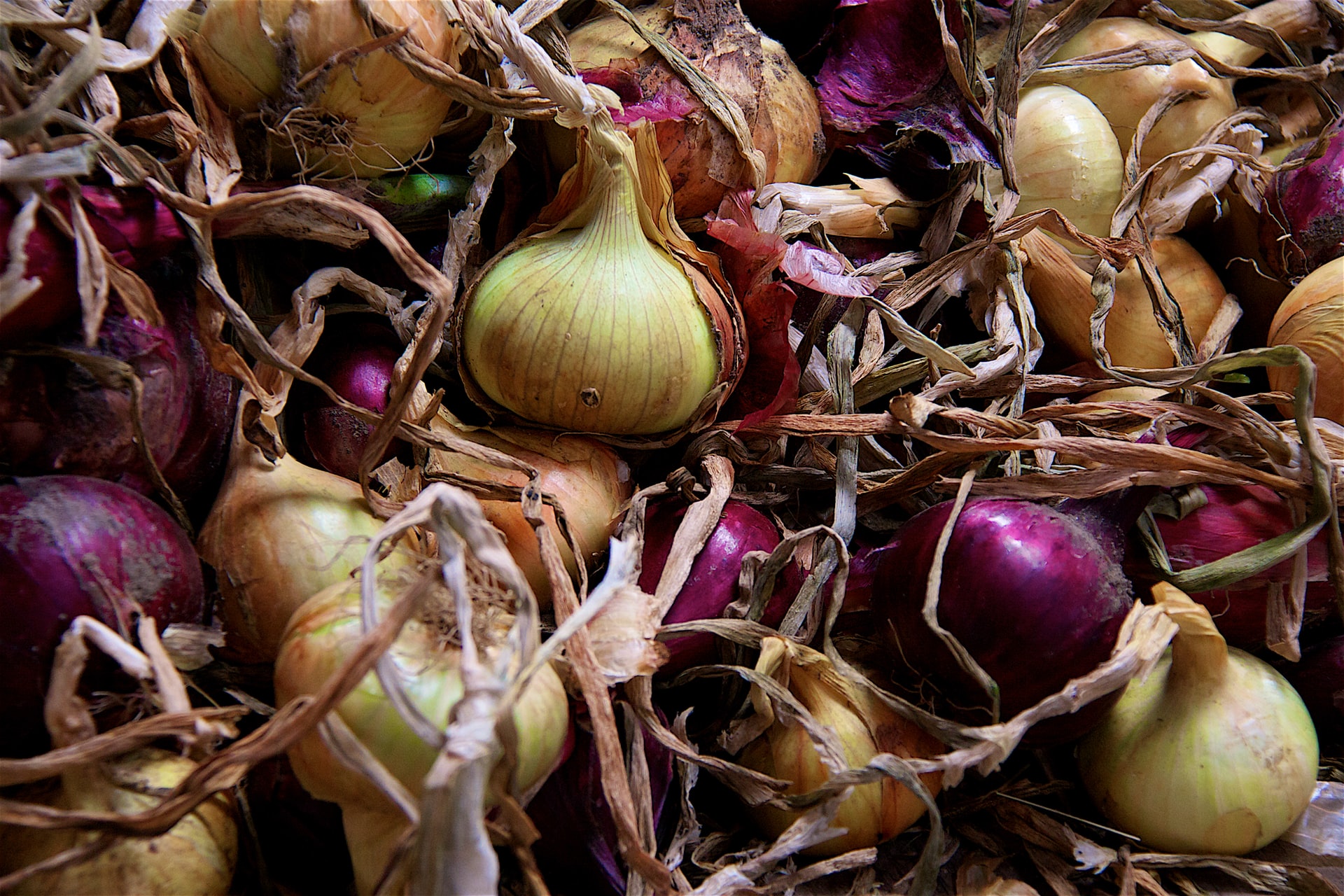Onions have been used in human nutrition since ancient times. They have an aromatic smell and a strong, more or less pungent taste. The flavor of onions depends on the climate in which they grow—the milder the climate, the sweeter the onion.
The Latin name for onion, Allium cepa L., translates to “one” or “unique,” for two reasons. First, an onion has a single, unique bulb, unlike its relative garlic. Second, the bulb itself consists of multiple united, concentrically arranged leaves that form the onion bulb. Onions are among those vegetables (such as parsley, celery, parsnip, and leek) that are also used as spices, making it sometimes difficult to distinguish between vegetables and spices.
Onion varieties differ in color, size, and taste. In spring and summer, there is a high variety of young onions, which have a sweet or medium-strong taste. In the fall, larger bulbs are harvested, which are dried and, after a few months, develop a dry, easily breakable skin. These onions have a strong aroma and are named based on their color—white, yellow, and red (purple). This category also includes shallots, a variety of onion with smaller bulbs.
Onions originate from Asia and the Middle East and have been cultivated for over 5,000 years. The Egyptians particularly valued onions, using them to pay the workers who built the pyramids, and pharaohs (such as Tutankhamun) placed onions in tombs to serve them in the afterlife.
In India, as early as the 6th century, onions were used not only in cooking but also for medicinal purposes. The popularity of onions persisted among the ancient Greeks and Romans, especially among the poorer classes as an addition to their simple meals.
In the Middle Ages, onions were an indispensable vegetable in many European countries, even being served as part of a healthy breakfast. Christopher Columbus spread onions to the West, and today the largest producers of this widely grown vegetable are China, India, the United States, Russia, and Spain.
Nutritional Value of Onions
Onions are a staple ingredient in the preparation of various dishes, where they are often cooked, and they are also used fresh in salads or as a side dish. They can be preserved by drying or pickling, and white onion sets are often pickled on their own.
The nutritional value and vitamin-mineral content of onions are listed in the tables:
| Nutritional Composition | Amount (%) |
|---|---|
| Raw Proteins | 0.3 – 1.8 |
| Raw Fats | 0.1 – 0.4 |
| Carbohydrates | 8 – 12 |
| Fiber | 0.7 – 0.8 |
| Minerals | 0.57 – 0.6 |
| Water | 87 – 90 |
Table 1: Nutritional value of fresh onions
| Minerals | Amount (mg/100g fresh onion) |
|---|---|
| Sodium | 7 – 10 |
| Potassium | 149 – 200 |
| Calcium | 27 – 35 |
| Phosphorus | 36 – 44 |
| Magnesium | 9 – 12 |
| Iron | 0.5 – 1.7 |
| Sulfur | up to 25 |
Table 2: Mineral composition of onions
| Vitamins | Amount (mg/100g fresh onion) |
|---|---|
| Carotene | 0.01 – 0.05 |
| E | 0.26 |
| B1 | 0.03 – 0.04 |
| B2 | 0.02 – 0.04 |
| B3 | 0.1 – 0.3 |
| B5 | 0.14 |
| B6 | 0.1 – 0.17 |
| C | 6 – 17 |
Table 3: Vitamin content in onions
Young onions are richer in carotene, especially the leaves.
Onions contain only 42 kcal / 176 kJ per 100 g, with most of the energy coming from carbohydrates (92%). The most prevalent carbohydrates are sugars, including glucose and sucrose, up to 6%.
Important components of onions include thiosulfinic acid (which inhibits bacterial growth) and allicin (which is produced when alliinase enzymes act on alliin, giving onions their characteristic smell).














































